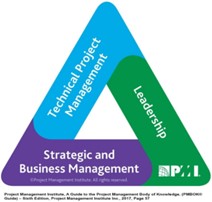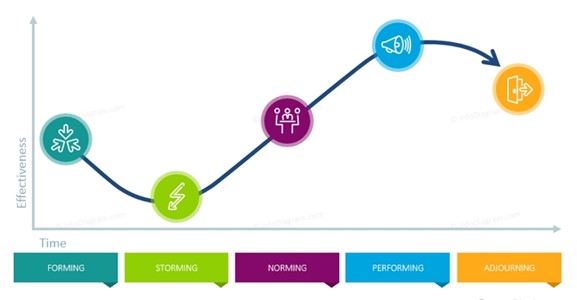Team development for high performance
| Line 33: | Line 33: | ||
| + | |||
| + | [[File:Tuckman.jpg]] | ||
Revision as of 19:50, 21 February 2021
Abstract
This article deals with the people perspective of project management. When different people must work together in a team different workflows, norms and challenges will occur. The team members will all have different views on tasks and how they should be solved. The traditional project management consists of methodologies revolving technical and procedural factors, but even with those very well-established frameworks, projects can be failures. The behavior of people in a team is one of the factors that drive successful project management.[1]. If the people do not work effectively together, the chances for success and reaching the goals are extremely limited. To reach an effectively workflow and a high preforming team, it is important to consider the different types of personalities and how they affect each other. All members of a team, especially the team leader, should have in mind that different people have different characteristics and a preference for certain types of work and roles in the project.[2].
The project management should follow the project team’s development through their time together on a project. As the team forms it will move through several stages as it changes from being a collection of random people into a team and eventually into a high performing team. The development can be described in five stages. Bruce W. Tuckman's work describes these stages as Forming, Storming, Norming, Performing and Adjourning.[3]. These stages are essential in order to grow into a functioning effectively team, which can deliver high quality results. Although this is not a new way of thinking, it is still highly relevant and respected. Also, the model remains popular and useful to project management, as it provides valuable strategies to lead and develop the team. The theory can provide insight into what stage of development the team is at and how a leader should be able to manage the team and motivate them to be as high performing as possible.
Table of content
- Team development in relation to project management
- Groups, Teams and High Performing Teams
- Tuckman’s model for Team Development
- Forming
- Storming
- Norming
- Performing
- Adjourning
- Attract, engage and integrate to develop the team
- Limitations to the model for team development
- Conclusion and further work
- Annotated Bibliography
- References
- ↑ https://www.projecttimes.com/articles/does-people-behavior-impact-projects-how-and-what-do-we-do-about-it.html
- ↑ Nigel Bennett, Managing Successful Projects with PRINCE2, 6th Edition, 2017
- ↑ https://www.clarityleadership.co.uk/blog/tuckman-model-team-formation

